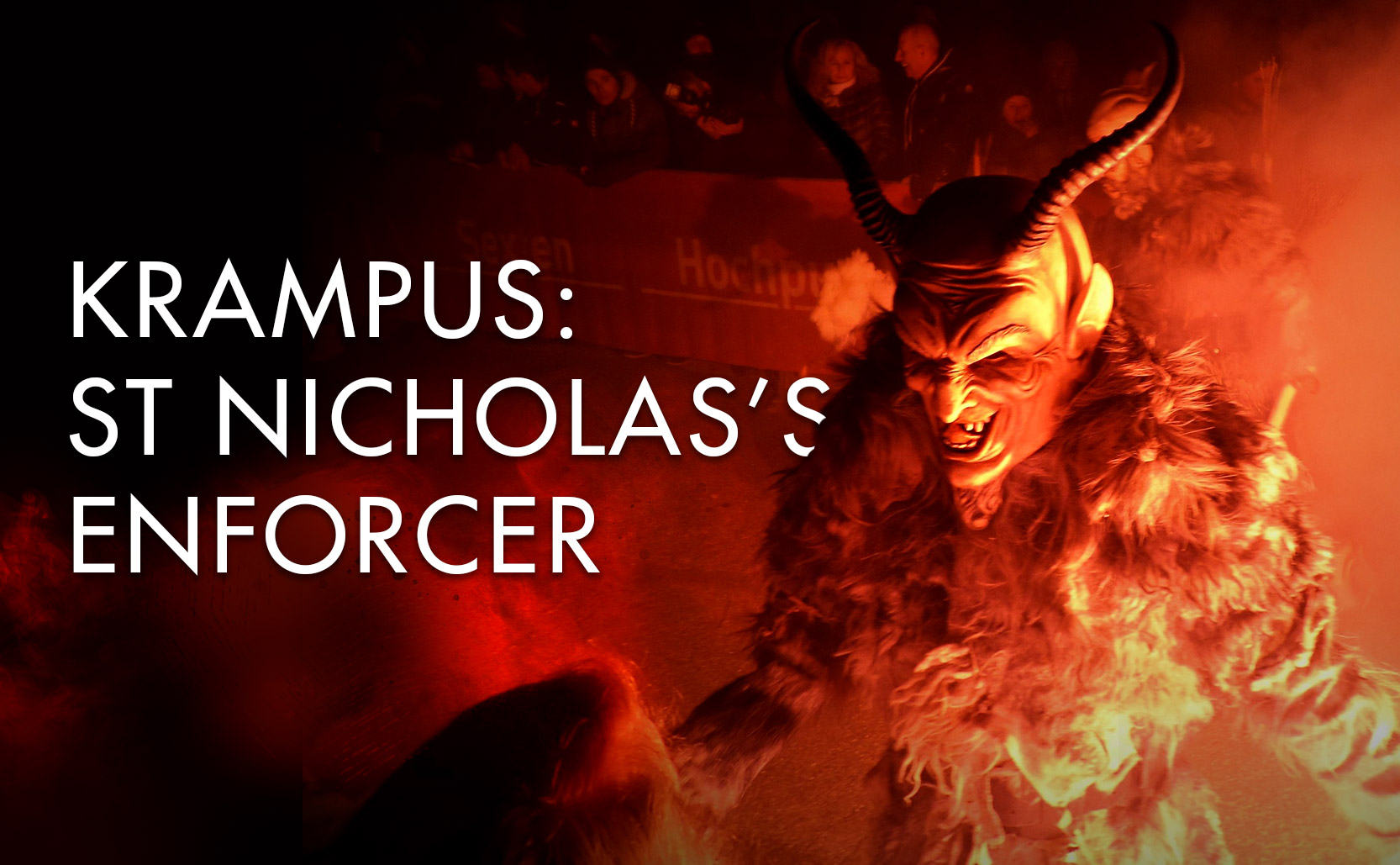Krampus: Saint Nicholas’s Enforcer
The devilish Christmas demon that comes for your children.
Krampus is Saint Nicholas’s demon associate. He appears before Christmas to punishes the bad children of Central to Eastern Europe, from Northern Italy up through the Czech Republic but with particular focus on Austria. He is an Advent tradition who arrives on the night of December 5th. His physical appearance varies but the essentials are that he’s hairy, he has cloven hooves, he’s horned, fanged, and usually has his tongue out. He sometimes wears chains or bells, and always has a birch stick to hit children with. For the especially bad kids Krampus has a sack / basket / cart he uses to kidnap them and take them off to be eaten.
Krampusnacht (“Krampus night”) is the night before Saint Nicholas’s day (December 6th). So right before Saint Nicholas comes to reward the good boys & girls with gifts, the “Christmas devil” comes to town to punish the misbehaved children. Towns and cities have parades and Krampusnacht Festivals the night of the 5th where men, dressed as Krampus demons, carry torches and move through the streets intimidating children (and adults, although they sometimes hand out schnapps to the adults). In more remote towns there is less of a “parade” and more of a “mad dash” (the Krampusflauf or “Krampus run”) of demons running through the streets.
While some claim that Krampus is part of an ancient pagan tradition, this is unlikely. There are no records of Krampus before the 16th century. The earliest known Krampus nights took place in 1582 in the Bavarian town of Diessen featuring a precursor to Krampus known as Perchta. Over time Perchta’s evil form (known as Schiachperchten) most likely became Krampus. By the mid 19th century Krampus became associated with Saint Nicholas (as something of a tamed devil – all of which was against the wishes of the Catholic Church). As Saint Nicholas morphed into being Santa Claus, Krampus came along for the ride.

Good Cop, Bad Cop
Santa Claus traditionally has a list of naughty & nice children, doing double duty rewarding the good children and leaving coal for the bad ones. In several European countries however the duty of doling out punishment is outsourced to a companion character. Belsnickel, Père Fouettard, Knecht Ruprecht, and (the very problematic) Zwarte Piet are all varying folk traditions of someone other than St. Nicholas / Santa Claus punishing bad children before Christmas. Krampus is an enforcer. Evil punishes evil, good rewards good.
Krampus is the bad cop to Saint Nicholas’s good cop. Good vs evil, light vs dark, the duality of life, he’s a dark counterpoint to the positive happy qualities of the season. It’s a carrot & stick approach to raising well behaved children.
Part of the allure of Krampus is that he’s a monstrous entity who appears during a season that is generally wholesome and friendly. He’s a bit of Halloween during Christmas. The Krampus tradition also lets the steam out a bit, it rebels against the conformity of the polite family-friendly Christmas and the increasing commercialization of the season.
Added info: there is also a lesser pop culture tradition of a sexualized female Krampus. Sometimes she’s being domineering over men, or over Krampus, but she’s always attractive and in control.


